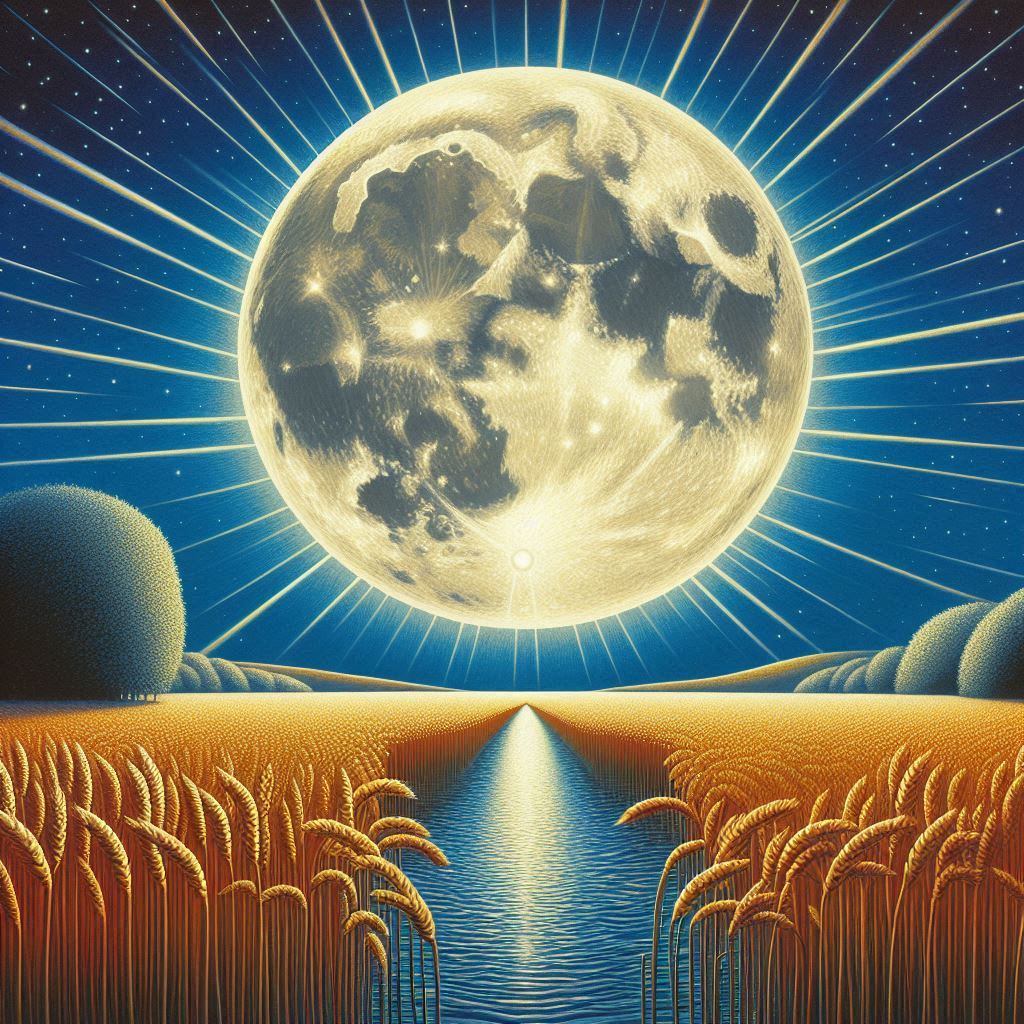
As the full moon graces the night sky this evening, we’re reminded of its powerful energy and the ancient traditions that have surrounded it for centuries. The full moon has long been associated with mysticism, transformation, and a heightened sense of intuition—qualities that make it the perfect time for tarot readers to cleanse their cards and connect more deeply with the energies around them.
The Power of the Full Moon in Tarot
In the world of tarot, the full moon holds a special place. It’s believed that the moon’s energy can amplify the accuracy and clarity of tarot readings, making it an ideal time for both practicing and learning the art of divination. The full moon is also a time of reflection, allowing us to release what no longer serves us and embrace new beginnings. For tarot readers, this means it’s the perfect opportunity to cleanse and recharge our decks.
Cleansing Tarot Cards Under the Full Moon
Cleansing tarot cards is a practice that dates back centuries. Tarot decks, like any tool used in spiritual work, can accumulate energy over time. This energy can come from previous readings, the environments in which the cards have been used, or even the emotional state of the reader. By cleansing your tarot cards under the light of the full moon, you’re allowing them to be recharged with pure, potent energy.
The process is simple yet deeply meaningful. On the night of the full moon, lay your tarot deck on a windowsill where the moonlight can touch it directly. If you prefer, you can also place your cards outside, ensuring they are protected from the elements. Leave them there overnight, allowing the moon’s light to cleanse and energize them. This ritual not only revitalizes your cards but also strengthens your connection to them, ensuring more insightful and accurate readings.
Myths and Superstitions About the Full Moon
The full moon has always been shrouded in mystery, giving rise to countless myths and superstitions across cultures. From ancient times to the present day, the moon has been associated with various beliefs and practices:
- Lunacy and the Moon: The term “lunatic” stems from the Latin word lunaticus, meaning “moonstruck.” Ancient civilizations believed that the full moon could drive people mad, leading to erratic behaviour and heightened emotions. Many people, including those in the Emergency Services still believe that this occurs, and whilst we are mainly undecided, we are leaning towards agreeing with them.
- Werewolves and Shape-shifting: Perhaps one of the most enduring myths is that of the werewolf, a creature believed to transform under the full moon’s light. This legend speaks to the idea of the moon’s ability to bring about profound change.
- Fertility and the Moon: The moon has long been linked to fertility, with many cultures believing that the full moon could enhance the chances of conception. This belief ties into the moon’s association with the feminine and the cycles of nature.
Throughout the year, different full moons take on unique names, each tied to specific times and agricultural practices. These names remind us of the moon’s integral role in both the natural world and our spiritual lives. For example, tonight’s full moon is known as the Harvest Moon, a time when crops are gathered and abundance is celebrated.
The most common names for the full moons are as follows:
- Wolf Moon – January
- Snow Moon – February
- Worm Moon – March
- Pink Moon – April
- Flower Moon – May
- Strawberry Moon – June
- Buck Moon – July
- Sturgeon Moon – August
- Harvest Moon – September or October
- Full Corn Moon (Harvest) – September
- Hunter’s Moon (Harvest) – October
- Beaver Moon – November
- Cold Moon – December
Understanding the Lunar Cycle
The lunar cycle is a journey of 29.5 days, during which the moon transitions through its phases—from the new moon to the full moon and back again. Each phase carries its own energy and significance, with the full moon representing the peak of this cycle. It’s a time of culmination, reflection, and release, making it the perfect moment for tarot readings and spiritual work.
Why the Full Moon Matters for Tarot Readers
For those interested in fortune-telling, the full moon offers an opportunity to deepen your practice and connect with the universe in a more meaningful way. Cleansing your tarot cards during the full moon is just one of the many ways to harness its energy. Whether you’re a seasoned reader or new to tarot, taking the time to honour the moon’s cycles can enhance your readings and bring a sense of ritual to your practice.
Join Our Journey Under the Moon
As the Harvest Moon rises tonight, we invite you to embrace its energy and explore the mysteries it holds. Whether you’re cleansing your tarot deck, reading by moonlight, or simply gazing up at the night sky, take a moment to connect with the ancient traditions that have been passed down through the ages.
For more insights into tarot, astrology, and the phases of the moon, follow us on Facebook and Instagram. Share your thoughts, experiences, and questions—we’d love to hear from you. Let’s continue this journey together, under the light of the full moon.
Follow Us on Social Media:
Join the conversation and stay tuned for our latest blog posts on all things tarot, astrology, and the mystical powers of the moon.